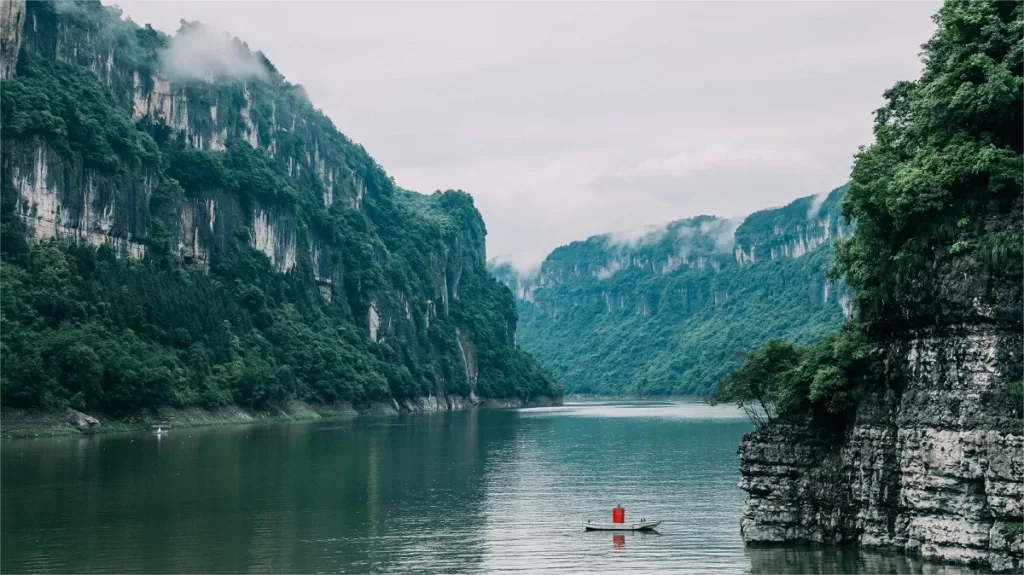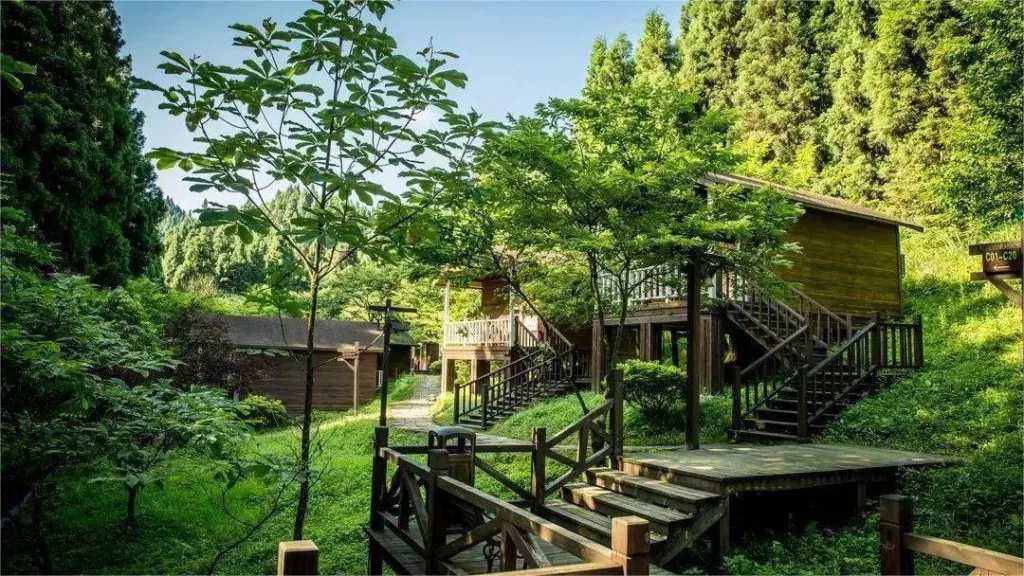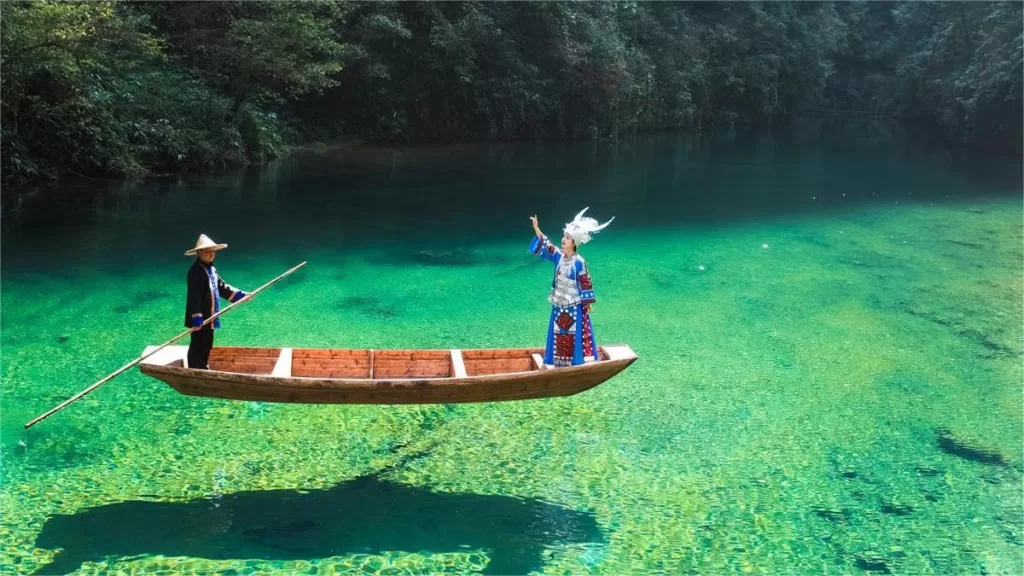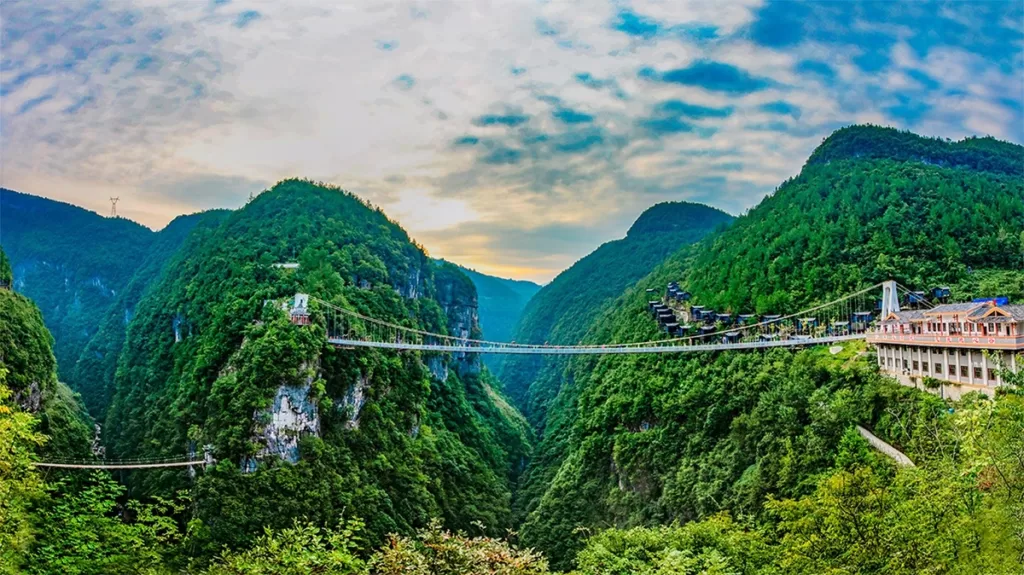Zona Escénica del Río Daqing - Entradas, horarios, ubicación y puntos destacados


The Daqing River Scenic Area (大清江风景区) stretches 87 kilometers from Fenshui River in Enshi City to Shuibuya in Badong County, representing the most beautiful and ecologically diverse section of the Qing River. The scenic area is divided into three spectacular sections: Qianpu Gorge, Hudie Gorge, and Bawang Gorge. The canyon’s both sides are adorned with picturesque peaks, imposing rock formations, and cascading waterfalls, creating a breathtaking natural landscape. Traditional stilted houses and Tujia pastoral scenes dot the landscape between the lush mountains and clear waters, earning acclaim from both domestic and international tourists.
Currently, the scenic area boasts a fleet of boats, including 480-seat, 300-seat, 280-seat, 200-seat, and 60-seat vessels, as well as two 25-seat speedboats, with a total capacity exceeding 4,000 passengers. Onboard amenities include VIP cabins, KTV rooms, standard cabins, chess rooms, multifunctional conference halls, conference observation rooms, and a sun deck, providing visitors with a comfortable and immersive experience amid the stunning natural scenery.
Índice
- Información básica
- Ubicación y transporte
- Highlights of Daqing River Scenic Area
- Vlog about Daqing River
- Consejos útiles resumidos a partir de reseñas
- Otras atracciones en Enshi Suburbs
Información básica
| Duración estimada de la visita | 4 - 5 horas |
| Precio del billete | 180 RMB |
| Horario de apertura | 8.00 – 15.00 |
| Número de teléfono | 0718-8277436 |
Ubicación y transporte
The Daqing River Scenic Area is situated on the northern bank of Hengshui River in Sancha Township, Enshi City, Enshi Tujia and Miao Autonomous Prefecture, Hubei Province. Accessible from the tourist dock in Sancha Township, it is currently not served by public transportation. Visitors can reach the scenic area either by private car or by joining organized tour groups.
Highlights of Daqing River Scenic Area
Red Flower Drifting Stone Forest

Among the “Top Ten Sights of Qing River,” the Red Flower Drifting Stone Forest is a geological marvel formed 140 million years ago, hailed by experts as a “rare geological museum.” The stone formations resemble inebriated figures, young maidens, fierce beasts, and more, showcasing the incredible artistry of nature. Within this stone forest is a colossal pillar named Gaozhaizi, the largest, most spectacular, and distinctive pillar in the entire stone forest, accentuating the natural wonders of the Enshi Qing River region.
Qianpu Gorge

Qianpu Gorge stretches 29 kilometers, and during the summer, it transforms into a breathtaking display of cascading waterfalls. Numerous waterfalls, varying in size and style, adorn the landscape, resembling silver threads, willow catkins, and featuring both grand and delicate features. Legend has it that when the Salt Lake Goddess was shot and killed by Bawu, the butterfly tribe that originated from the Salt Lake scattered and fled. As they arrived in this area, they descended from the sky and, standing on the cliffs, gazed sorrowfully in the direction of the Salt Lake Goddess’s demise, leaving behind tears that formed countless continuous waterfalls.
Jingyang Bridge

Jingyang Bridge is a significant project within the Shuibuya reservoir area’s migration and reconstruction initiative. Spanning a total length of 519 meters, with a net span of 260 meters (the length of the red arc), the bridge is designed with a navigable height of 18 meters. Invested by the Qing River Hydropower Development Company with over 58 million yuan, the bridge took 26 months to complete and was opened to traffic in 2007. Renowned for its graceful arch, locals affectionately refer to it as the Rainbow Bridge due to its stunning appearance.
Butterfly Cliff

Butterfly Cliff stands as a iconic landmark within the Enshi Daqing River Scenic Area, named for its cliff formation resembling the outspread wings of a butterfly. During the rainy season, the water flow intensifies, and amidst the butterfly-shaped cliffs, waterfalls cascade down from mountain caves with a thunderous roar, creating a truly spectacular sight. Legend has it that this is the place where the Salt Lake Goddess transformed into a butterfly to detain Bawu Xiang (also known as Lin Jun). Despite Bawu Xiang’s admiration for the beautiful Salt Lake Goddess, this area was not his ideal tribal settlement. In pursuit of the tribe’s interests, he decided to journey westward. In an attempt to detain him, the Salt Lake Goddess transformed into a seven-foot colorful butterfly during the day, leading the butterfly tribe formed from the Salt Lake to block out the sunlight. For seven days and nights, the sky remained dim, and Bawu Xiang lost his direction. Touched by the devotion of the Salt Lake Goddess, Bawu Xiang was finally moved, and they became husband and wife, embarking on a life of happiness and tranquility.
Bawang Gorge

Bawang Gorge boasts a magnificent and precipitous landscape. The countless collisions and washings of Qing River water over numerous days and nights have sculpted cliffs and precipices reminiscent of cuts from knives and axes. Surprisingly, on these steep cliffs, lush forests have grown from the crevices, a testament to the vibrant vitality and tenacious life force of nature. Legend has it that after Bawu Xiang sorrowfully shot and killed the Salt Lake Goddess here, he traversed this gorge, traveling upstream on the Qing River to reach Chongqing. Ultimately, this journey gave rise to the unique Ba Culture in Chinese civilization.
Five Brothers Peaks

The Five Brothers Peaks are composed of five intricately arranged, riverside-standing peaks. Before the Shuibuya Dam at Gaoping, the Qing River basin often experienced flooding. Legend has it that these disasters were caused by a vengeful dragon, who wreaked havoc on the land. In order to slay the dragon and protect the local fishermen and workers from harm, the five sons of the Liu family sacrificed their lives. After their deaths, they transformed into the five peaks, serving as guardians to suppress the dragon. In commemoration of their sacrifice, locals refer to these peaks as the Five Brothers Peaks.
Shuibuya Dam

The Shuibuya Dam has been recognized by the International Commission on Large Dams as a “landmark project showcasing China’s leading construction of concrete-face rockfill dams ahead of other countries in the world.” With an absolute height of 233 meters, it stands as the world’s first dam exceeding 200 meters in height among concrete-face rockfill dams. Breaking through the theoretical limit of 200 meters for concrete-face rockfill dams worldwide, the Shuibuya Dam marks a significant technological breakthrough in constructing such dams in karst regions. The dam not only demonstrates China’s engineering prowess but also contributes to flood control, power generation, and ecological preservation in the Daqing River Scenic Area.
Vlog about Daqing River
Consejos útiles resumidos a partir de reseñas
Boat Departure Times: Boats depart promptly at 8:30 AM in the morning. In the afternoon, there’s another departure at 2:00 PM, but you need to call the scenic area in advance to reserve a seat. Note that if the afternoon boat does not have at least 30 passengers, it may not depart.
Boat Amenities: The boats on the Enshi Daqing River are well-equipped. They offer snacks and meals on board for an additional fee. It’s recommended to make reservations in advance, and the cost is around 35 yuan per person.
Private Rooms on the Boat: Each level of the boat has private rooms available. These rooms are equipped with mahjong tables and air conditioning, accommodating up to 10 people. The cost is around 1400 yuan per room, and you can share the cost with others if needed.
Prepare for Wind: When on the boat, be prepared for windy conditions, especially on the open deck. Bring along a lightweight jacket or outer layer to stay comfortable as the wind can be quite strong.
Limited Phone Signal: Due to the remote nature of the scenic area, mobile phone signals may be weak or intermittent while on the boat. Don’t rely too heavily on connectivity during the trip.
Initial River Conditions: Initially, the river surface may appear somewhat dirty. However, after about half an hour into the journey, you’ll notice a significant improvement as the river becomes cleaner and more picturesque.
Otras atracciones en Enshi Suburbs

Pingbaying National Forest Park

Gran Cañón de Pingshan

Bosque de piedra de Suobuya

Arroyo Shennong

Valle de Enshi Dixin
Atracciones de Enshi, Paisajes de Hubei